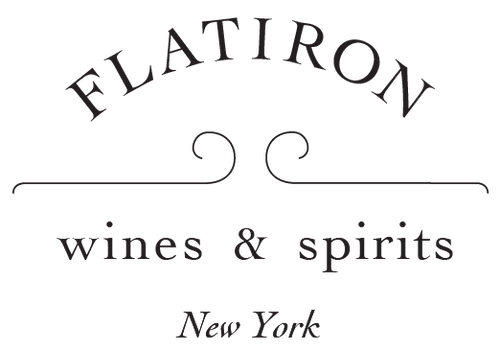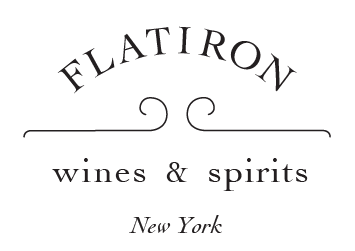Champagne isn’t just for celebrations!
Dear Extra Brut Friends,
“Champagne isn’t just for celebrations!” It’s almost a motto around here. And it’s true: Champagne is just about the most versatile wine in the world and the easiest to preserve in the fridge (all you need is a decent wine stopper and it will keep for days or longer). Which makes it a wine to always have on hand – indeed, to always have on the go.
And yet, Champagne is DEFINITELY the most celebratory drink in the world. The ceremonial “Pop!” of the cork. The elegant string of bubbles rising in the glass. The exciting bouquet, beautiful texture of mousse and acidity, and the mouthwatering flavors. There is no better way to celebrate.
And this is December, the month of celebrations.
So this month we have two very special, supremely celebratory wines. Don’t get us wrong: they’re interesting too! But these are wines that when you open them will hit you first in the “Wow, is that yummy” bone, long before they hit you in the “oh how fascinating!” bone. If you aren’t careful, you may have finished the bottle before you get past the classiness, the elegance, and the sheer joy of the bubbles and can even start to think about terroir or technique.
We hope you have occasion to open these wines to celebrate the best of times with people you love. See you in the New Year.
Cheers,
Your Friends at Flatiron Wines
P.S. Have a question or comment you'd like to share?
Our thoughts on this selection
If we were only allowed one wine to celebrate with this holiday season it would be Roederer’s 2016 Vintage Brut. It is the kind of Champagne that somehow makes any event feel that much more momentous, that will mark any celebration as a celebration.
No, not Roederer’s 2016 Cristal. As special as that wine is – and as blindingly delicious as it will one day be – the 2016 Brut is the wine to open now. It hits all of Champagne’s highest notes: beautiful bubbles; aromatic to the point of being showy; full flavored yet refined in a way that you can help but fall in love with.
That flat-out deliciousness doesn’t come easy. The wine is based on Pinot Noir grown on a site, “La Montagne,” they call it, which the Roederer family bought in the 1840s. Louis Roederer still owns it today, and farms it organically and biodynamically, to bring out the chalky minerality.
The site is also noteworthy for its north-easterly aspect, which often makes for late-ripening fruit – a potentially risky affair. But in 2016, a warm, dry harvest gave Pinot with classic Montagne de Reims power and structure. They fermented ⅓ of the fruit in oak and allowed a small amount to go through malo, and then blended Chardonnay (32%) to make a final assemblage that balances power and elegance perfectly.
If a lot of that sounds like the kind of attention to details of vintage and terroir that is often said to be a mark of Growers rather than Grand Marques, it’s no accident. Louis Roederer is a Grand Marques – but a Grand Marques that operates in many respects like a grower. They own 593 acres of vineyards. They farm organically and biodynamically (they’re the largest biodynamic farmer in Champagne), and they ferment each site separately.
It’s a great wine to open for celebrating, for toasting with, or just to appreciate on its own. But it’s also, like all great Champagne, a superstar with food.
Our thoughts on this selection
Larmandier-Bernier’s Latitude may seem at first blush to be a polar opposite of Roederer’s 2016. Most obviously, it’s both a non-vintage blend and a Blanc de Blancs, where the Roederer is a Pinot-based vintage wine. Dig deeper and the differences pile up: Larmandier-Bernier has “only” been in existence since 1971 (Roederer, 1776); they own “only” 18 hectares (Roederer, 240); L-B is a Côte des Blancs specialist (Roederer Brut 2016 comes from the Montagne de Reims).
But those differences are, to some extent, only superficial. Take the question of history: Larmandier-Bernier may have only been created when M. Larmandier married Mlle. Bernier in 1971, but both families have histories in the region going back to the revolution.
And while 18 hectares isn’t huge, it’s about as much as a single family can farm with the sort of attention to detail that both L-B and L-R see as essential to their art. Roederer can manage more, of course, because they have the resources to put together sizable and expert teams that spare no expense or effort in caring for the vines.
Indeed, the closer you get to the wines and the vines the more you see similarities. As early as Roederer was to start adopting organic and biodynamic practices (they began in 2000 and more than ½ their vines were fully certified by 2020), Pierre Larmandier was even earlier, moving the family’s vineyards over to organic viticulture in 1992 and then to full-blown biodynamic farming by 1999.
Even the question of terroir is not quite the contrast it may seem at first glance. While the Cote des Blancs is famous for the thin (or non-existent) topsoil over pure, pure chalk, Latitude is sourced from the southern part of Vertus, where there is a deeper, clay topsoil – and where Pinot was therefore historically planted.
In Pierre Larmandier’s view, the wine’s round, rich, charming style, comes from this unique terroir, as does its "pinot-like" characteristics of breadth and red fruit flavors. That generosity, balanced by the house low dosage (3 g/L) and purity-focussed house style, makes for a Champagne that is every bit as deliciously celebratory as the Roederer. Would it pair beautifully with a fish dish (or seven, if that’s how you roll)? Absolutely! Does it need it? Absolutely not!
We’re ever so grateful you’ve invited our selections into your home for the holidays and we hope you love these bottles as much as we do.
YOU MAY ALSO LIKE
A guide to the best bubbles in the world and what makes them different from the Grandes Marques
Champagne is the world’s most famous sparkling wine. Hailing from the Champagne regions of France, its biggest names are among the biggest names in wine: Moet, Dom Perignon, Veuve Clicquot, Cristal.
But there’s another side to Champagne: a universe of small-scale producers preserving ancient family farming traditions and bottling wines you’ve never heard of.
These are the Grower Champagnes.
We're here to help
Have a burning question or just want to connect with our team of fellow Champagne lovers?







![Bottle of Larmandier-Bernier, Champagne Rose de Saignee Extra Brut 1er Cru, NV [2020] - Sparkling Wine - Flatiron Wines & Spirits - New York](http://nyc.flatiron-wines.com/cdn/shop/files/Larmandier-Bernier-Champagne-Rose-de-Saignee-Extra-Brut-1er-Cru-NV-2020-Sparkling-Wine-Flatiron-Wines-Spirits-New-York_{width}x.jpg?v=1744048223)








